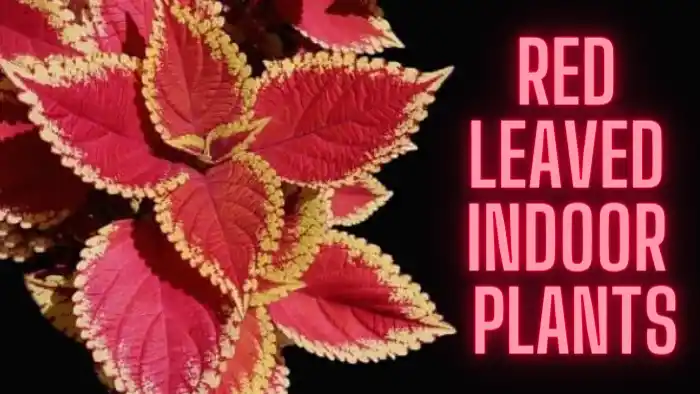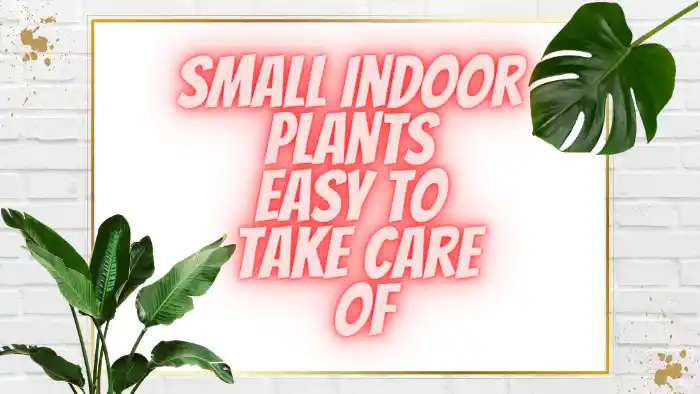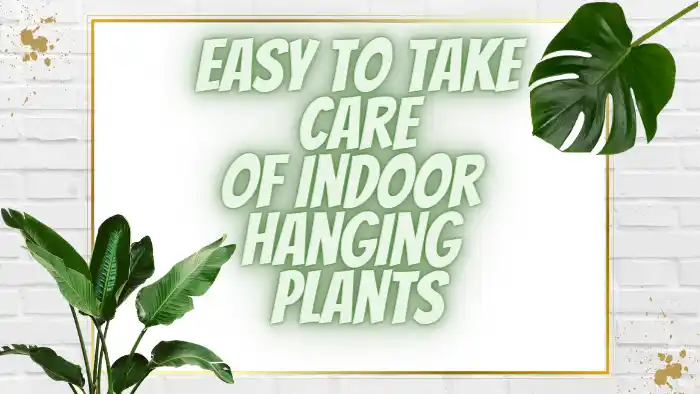In today’s fast-paced world, finding ways to reconnect with nature is essential. Bringing plants indoors is a wonderful way to create a serene and refreshing atmosphere.
Red-leaved indoor plants, with their captivating hues and intricate foliage, offer a unique opportunity to introduce natural beauty right into your living spaces.
Their rich colors evoke feelings of warmth, energy, and tranquility, making them an ideal addition to any room.
Why Choose Red-Leaved Plants for Your Home?
The allure of red-leaved indoor plants goes beyond their aesthetic appeal.
These plants have the ability to transform a mundane setting into a captivating oasis.
The vibrant red hues act as attention-grabbing focal points, instantly elevating the visual interest of your home.
Moreover, studies have shown that having indoor plants can positively impact your mental and emotional well-being, and red-leaved varieties, in particular, bring a sense of passion and excitement to your surroundings.
Huge Varieties of Red Leaved Indoor Plants
Bold Beauty: Red Aglaonema
Red Aglaonema, also known as Chinese Evergreen, is a stunning plant with variegated leaves displaying shades of red, pink, and green.
This variety thrives in low to moderate light conditions, making it suitable for various indoor environments.
Its air-purifying qualities and low maintenance needs make it a perfect choice for both beginner and experienced plant enthusiasts.
Rich Elegance: Red Prayer Plant
The Red Prayer Plant, scientifically known as Maranta leuconeura, boasts striking red veins on its deep green leaves.
What makes this plant fascinating is its ability to fold its leaves at night, resembling hands in prayer—a behavior that adds an interactive element to your plant care routine.
Its unique foliage and adaptive nature make it a favorite among indoor gardening enthusiasts.
Striking Contrast: Red Veined Nerve Plant
Fittonia, commonly referred to as the nerve Plant, features intricate red veins on its lush leaves, creating a mesmerizing contrast against its green backdrop.
This plant thrives in high humidity environments, making it an excellent choice for bathrooms or kitchens. Its compact size and distinctive appearance make it an attractive addition to small spaces.
Plant with Red and Green Leaves
Red-leaved indoor plants are a vibrant addition to any living space, adding a splash of color and visual interest. Here are some popular varieties:
1. Red Aglaonema With its striking red and pink hues, the Red Aglaonema is a captivating choice that’s relatively easy to care for.
2. Rex Begonia Known for their intricate leaf patterns and shades of red, Rex Begonias are a unique and attractive option.
3. Red Veined Nerve Plant This plant features red veins running through its leaves, creating a captivating contrast against its green backdrop.
4. Red Prayer Plant With its reddish hues and unique folding leaves, the Red Prayer Plant is a mesmerizing addition to indoor collections.
5. Bloodleaf The Bloodleaf plant boasts deep red foliage and is prized for its vibrant coloration.
6. Ruby Rubber Plant The Ruby Rubber Plant features deep red leaves and offers both visual appeal and air-purifying benefits.
7. Coleus plants come in various shades of red, offering a versatile choice for indoor gardens.
8. Red Star Dracaena Known for its bold, red-tipped leaves, this Dracaena adds a touch of drama to interior spaces.
9. Red Velvet Ctenanthe With its velvety red undersides, the Red Velvet Ctenanthe is an elegant and unique option.
10. Red Anthurium The Red Anthurium’s heart-shaped red flowers and glossy leaves make it a favorite among indoor plant enthusiasts.
Care and Maintenance of Red-Leaved Indoor Plants
Proper care is essential to keeping your red-leaved indoor plants thriving. Here’s what you need to know:
Light Requirements: Most red-leaved plants prefer bright, indirect light, as direct sunlight can scorch their leaves.
Watering Techniques: Allow the top inch of soil to dry before watering, preventing overwatering and root rot.
Fertilization: Throughout the growing season, use a stable fertilizer to offer essential nutrients.
Humidity Levels: Many red-leaved plants thrive at higher humidity levels, so consider misting or using a humidifier.
Temperature Preferences: Maintain stable temperatures and avoid drafts to prevent stress on your plants.
Pruning and Trimming: Regularly remove dead or yellowing leaves to promote healthy growth.
Potting and Repotting: Repot your plants when they become root-bound, using well-draining soil.
Pest Control: Keep an eye out for pests like spider mites and aphids, and address them promptly.
Common Diseases: Red-leaved plants can be susceptible to diseases like fungal infections, so monitor their health closely.
Propagation Methods: Learn how to propagate your plants through methods like stem cuttings.
Benefits of Red-Leaved Indoor Plants
Red-leaved plants offer more than just visual appeal; they provide various benefits to your living space:
Air Purification: Like other indoor plants, red-leaved varieties help purify the air by removing toxins.
Improved Mood and Productivity: The vibrant colors can positively impact your mood and productivity.
Stress Reduction: Connecting with nature indoors can contribute to stress reduction and relaxation.
Natural Decor and Aesthetics: Red-leaved plants serve as natural decor, enhancing the aesthetic of your home.
Indoor Gardening: Caring for indoor plants can be a rewarding form of gardening and self-expression.
Positive Psychological Effects: Indoor plants are known to have positive effects on mental well-being.
Enhanced Focus and Concentration: Having plants around can help improve focus and concentration.
Noise Reduction: Plants can contribute to reducing indoor noise levels.
Increase in Humidity: Indoor plants release moisture, increasing humidity levels in dry environments.
Companionship: Caring for plants can offer a sense of companionship and responsibility.
Best Placement for Red-Leaved Indoor Plants
Consider these placements to maximize the impact of your red-leaved plants:
Living Room: Create a focal point by placing red-leaved plants on coffee tables or shelves.
Bedroom: Enhance the tranquility of your bedroom with a touch of natural color.
Home Office: Boost productivity and creativity by adding a red-leaved plant to your workspace.
Kitchen: Liven up your kitchen space by placing plants on countertops or windowsills.
Bathroom: Select plants that thrive in high humidity to add life to your bathroom oasis.
Entrance Hall: Welcome guests with a burst of color by placing plants near your entrance.
Vertical Gardens: Use wall-mounted planters to create vertical gardens, saving space.
Hanging Baskets: Elevate your decor with hanging baskets showcasing red-leaved plants.
Shelving Units: Arrange plants on shelves to add dimension and color to your interiors.
Wall-mounted Planters: Mount plants on walls for an artistic and unique display.
Common Troubles Faced by Red-Leaved Indoor Plants
Address common issues promptly to keep your plants healthy:
Drooping leaves Could indicate underwatering, overwatering, or inadequate light.
Wilting: is usually a sign of underwatering or root problems.
Yellowing leaves May result from overwatering, poor drainage, or nutrient deficiencies.
Browning leaves are often caused by excessive sunlight or inconsistent watering.
Leaf curling Could be due to low humidity or pest infestations.
Leaf Spots: Fungal or bacterial infections can lead to spots on leaves.
Root rot is caused by overwatering and poorly draining soil.
Overwatering: Can lead to root rot and other moisture-related issues.
Underwatering: Causes leaves to become dry, brittle, and discolored.
Fungal Infections: Poor air circulation and high humidity can encourage fungal growth.
Popular Varieties of Red-Leaved Indoor Plants
Discover even more red-leaved options to diversify your indoor garden:
Red Maranta: is known for its striking red veins, adding depth to its leaves’ green background.
Red Philodendron: Offers heart-shaped leaves in varying shades of red.
Red Caladium: Features arrow-shaped leaves with intricate red patterns.
Red Fittonia: It presents red veining on its lush, green foliage.
Red Polka Dot Plant: Characterized by its red-speckled leaves.
Red Croton: Showcases vibrant red, orange, and yellow foliage.
Red Wandering Jew: Boasts red-purple leaves and a trailing growth habit.
Creating the Perfect Environment
Light and Placement
Proper placement is crucial for the health and vibrancy of red-leaved indoor plants. While some varieties can tolerate low light conditions, they generally thrive in bright, indirect light.
Avoid placing them in direct sunlight, as this can lead to leaf burn. Experiment with different locations until you find the perfect balance of light for your plants.
Soil and Potting
Using well-draining potting mix is essential for red-leaved plants. A blend that holds moisture without becoming waterlogged is great.
When repotting, choose a container that allows for proper drainage to prevent root rot.
Keep an eye on the growth of your plant, and upgrade its pot as needed to provide enough space for its roots to flourish.
Temperature and Humidity
Maintaining a comfortable temperature and humidity level is crucial for red-leaved indoor plants.
These plants typically prefer temperatures between 65°F and 80°F (18°C and 27°C).
To create a humid environment, consider misting your plants regularly or placing a tray of water near them. This will help prevent issues like leaf browning and drying.
Nurturing Your Red Leaved Indoor Plants
Watering
Finding the right watering routine is key to the well-being of your red-leaved plants. Allow the top inch of the soil to dry out before watering again.
Overwatering can lead to root rot, while underwatering can cause stress to the plant. Strike a balance by observing your plant’s behavior and adjusting your watering schedule accordingly.
Fertilizing
During the growing season (spring and summer), feed your red-leaved plants with a balanced liquid fertilizer every 4-6 weeks.
Be sure to dilute the fertilizer to half the recommended strength to prevent over-fertilization. In the dormant season, reduce the frequency of fertilization as the plant’s growth slows down.
Pruning
Regular pruning is essential to maintaining the shape and health of your red-leaved plants. Remove any dead or yellowing leaves to encourage new growth.
If your plant becomes leggy, you can also trim it back to promote bushier growth. Pruning not only enhances the appearance of the plant but also allows it to allocate energy efficiently.
Troubleshooting: Common Issues and Solutions
Leaf Discoloration
If you notice the leaves of your red-leaved plant turning brown or yellow, it could be due to inadequate lighting or improper watering.
Adjust the light exposure and water levels accordingly. If the issue persists, consider repotting the plant in fresh, well-draining soil.
Pests and Diseases
Red-leaved plants are susceptible to common indoor plant pests like spider mites and mealybugs. Regularly inspect your plants for any signs of infestation, such as webbing or white cotton-like clusters.
Use natural remedies like neem oil or insecticidal soap to combat pests while minimizing harm to the plant.
The Aesthetic Appeal: Using Red Leaved Plants in Interior Design
Integrating red-leaved plants into your interior design can create a stunning visual impact. The bold red tones act as eye-catching accents against neutral color palettes.
Place them in ornamental pots that complement your stylistic layout style. You can also experiment with different plant arrangements to create focal points or add a touch of drama to any room.
Boosting Air Quality and Mood
In addition to their visual appeal, red-leaved indoor plants contribute to improved air quality by purifying the surrounding air.
They absorb pollutants and release fresh oxygen, creating a healthier indoor environment for you and your family.
Conclusions
Incorporating red-leaved indoor plants is a delightful way to infuse your home with vibrancy and natural beauty.
Beyond their striking appearance, these plants offer numerous benefits, from enhancing interior design to improving air quality.
By choosing varieties that suit your space and caring for them diligently, you can elevate your living environment and enjoy the soothing presence of nature indoors.
Discover the joy of welcoming red-leaved plants into your home and reaping the rewards they bring.
FAQs
Are red-leaved indoor plants suitable for beginners?
Absolutely! Many red-leaved indoor plants, like Red Aglaonema, are known for their low-maintenance needs, making them great choices for both novice and experienced plant enthusiasts.
Can I place red-leaved indoor plants in direct sunlight?
It’s best to avoid direct sunlight for red-leaved plants, as this can lead to leaf burn. Opt for bright, indirect light to ensure optimal growth and vibrant foliage.
How often should I water my red-leaved plants?
Allow the top inch of soil to dry out before watering. Stick your finger into the soil to gauge its moisture level, and water when it feels slightly dry to the touch.
What should I do if I notice pests on my red-leaved plant?
Regularly inspect your plants for signs of pests like spider mites or mealybugs. If you spot any, treat the plant with natural remedies like neem oil or insecticidal soap to eliminate the pests.
Can I use red-leaved plants as part of my interior design?
Absolutely! The bold red tones of red-leaved plants make them excellent accent pieces. Place them in decorative pots that match your style, and experiment with different arrangements to create visual interest in your spaces.
I am a Horticulture graduate and passionate gardener with expertise in identifying, growing, and caring for plants, trees, and seeds. With a focus on sustainable practices, they aim to promote environmental awareness and appreciation for the natural world.








